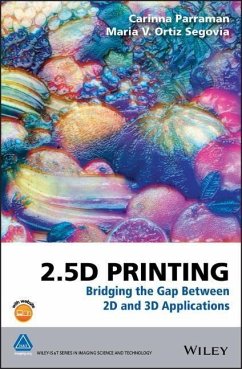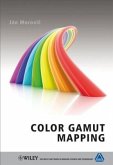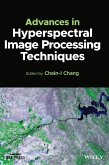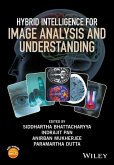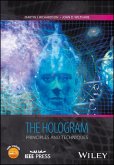A guide that examines the history and current state of 2.5D printing and explores the relationship between two and three dimensions
2.5D Printing: Bridging the Gap Between 2D and 3D Applications examines the relationship between two- and three-dimensional printing and explores the current ideas, methods, and applications. It provides insights about the diversity of our material culture and heritage and how this knowledge can be used to design and develop new methods for texture printing. The authors review the evolving research and interest in working towards developing methods to: capture, measure and model the surface qualities of 3D and 2D objects, represent the appearance of surface, material and textural qualities, and print or reproduce the material and textural qualities.
The text reflects information on the topic from a broad range of fields including science, technology, art, design, conservation, perception, and computer modelling. 2.5D Printing: Bridging the Gap Between 2D and 3D Applications provides a survey of traditional methods of capturing 2.5D through painting and sculpture, and how the human perception is able to judge and compare differences. This important text:
_ Bridges the gap between the technical and perceptual domains of 2D and 3D printing
_ Discusses perceptual texture, color, illusion, and visual impact to offer a unique perspective
_ Explores how to print a convincing rendering of texture that integrates the synthesis of texture in fine art paintings, with digital deposition printing
_ Describes contemporary methods for capturing surface qualities and methods for modelling and measuring, and ways that it is currently being used
_ Considers the impact of 2.5D for future technologies
2.5D Printing is a hands-on guide that provides visual inspiration, comparisons between traditional and digital technologies, case studies, and a wealth of references to the world of texture printing.
Please visit the companion website at: www.wiley.com/go/bridging2d3d . www.wiley.com/go/bridging2d3d
Hinweis: Dieser Artikel kann nur an eine deutsche Lieferadresse ausgeliefert werden.
2.5D Printing: Bridging the Gap Between 2D and 3D Applications examines the relationship between two- and three-dimensional printing and explores the current ideas, methods, and applications. It provides insights about the diversity of our material culture and heritage and how this knowledge can be used to design and develop new methods for texture printing. The authors review the evolving research and interest in working towards developing methods to: capture, measure and model the surface qualities of 3D and 2D objects, represent the appearance of surface, material and textural qualities, and print or reproduce the material and textural qualities.
The text reflects information on the topic from a broad range of fields including science, technology, art, design, conservation, perception, and computer modelling. 2.5D Printing: Bridging the Gap Between 2D and 3D Applications provides a survey of traditional methods of capturing 2.5D through painting and sculpture, and how the human perception is able to judge and compare differences. This important text:
_ Bridges the gap between the technical and perceptual domains of 2D and 3D printing
_ Discusses perceptual texture, color, illusion, and visual impact to offer a unique perspective
_ Explores how to print a convincing rendering of texture that integrates the synthesis of texture in fine art paintings, with digital deposition printing
_ Describes contemporary methods for capturing surface qualities and methods for modelling and measuring, and ways that it is currently being used
_ Considers the impact of 2.5D for future technologies
2.5D Printing is a hands-on guide that provides visual inspiration, comparisons between traditional and digital technologies, case studies, and a wealth of references to the world of texture printing.
Please visit the companion website at: www.wiley.com/go/bridging2d3d . www.wiley.com/go/bridging2d3d
Hinweis: Dieser Artikel kann nur an eine deutsche Lieferadresse ausgeliefert werden.

